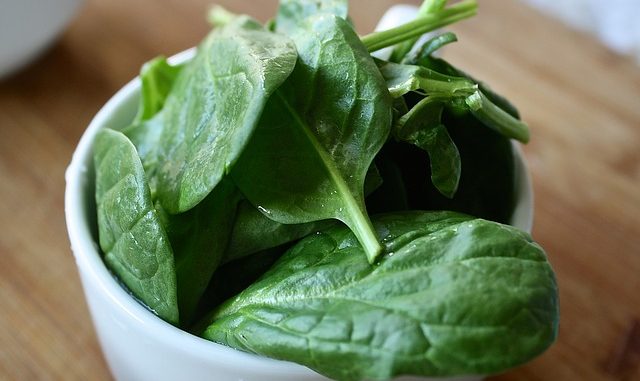
Spinach is one of those leafy vegetables which we all enjoy. For years Popeye would often gobble a can of the stuff so that he gained huge muscles and was able to fight off the baddies. Whilst that might seem an extreme illustration of the power of spinach there is plenty to recommend it from a nutritional point of view.
Spinach has been used by many different cultures through history. It is mainly around the Mediterranean, the Middle East and South-East Asia that cuisine has made great use of this food. It has been eaten raw but also cooked. When it is cooked it will reduce in size considerable because water is squeezed out of it.
Spinach is one of those vegetables that is available all year round. This dark green leafy vegetable is one for the gardener to grow. It is in season mainly in the spring (between March and June). It is easy to grow as we have outlined elsewhere on this web-site.
The flavour of spinach is much milder than a lot of greens which offer similar nutritional qualities like kale and cabbage. It is ideal for all of us who dislike strong bitter flavours.
Nutrition Of Spinach
One of the main minerals that spinach is noted for is that it is rich in iron. We know iron plays a major role at the heart of haemoglobin in red blood cells. This pigment is critical for the transport of oxygen to all tissues. Iron is also needed for energy production and for DNA synthesis.
Spinach also contains a number of vitamins like vitamin A, vitamin K, vitamin C and folate. It is also good for minerals like manganese and magnesium. One vitamin, vitamin B2 or riboflavin is also found in this vegetable.
Spinach also contains some very useful antioxidants one of which is lutein which is ideal for reducing the risk of the debilitating condition of age-related macular degeneration. It also contains many other carotenoids inlcuding beta-carotene and zeaxanthin. The magazine for nutrition professionals, Today’s Dietician is very firm in its opinion that these carotenoids can reduce the risk of cancer from developing and progressing. Lutein and zeaxanthin plays a part in protecting our vision from UV and blue light. Blue light is one of those issues associated with mobile phones and tablets.
Vitamin K by the way is needed for good bone health.
One cup of raw spinach contains:
- 7 calories
- 0.86 grams (g) of protein
- 30 milligrams (mg) of calcium
- 0.81 g of iron
- 24 mg of magnesium
- 167 mg of potassium
- 2,813 international units (IU) of Vitamin A
- 58 micrograms of folate
The United States Department of Agriculture (USDA) states that a 100 gram serving of spinach contains 28.1 micrograms of vitamin C which is 34% of the daily recommendation.
Spinach And Reduction Of Cognitive Decline
In one study, adults with an average age of 81 and all dementia free ate one serving of spinach or other leafy green per day. in that study which occurred over 5 years, those who did so showed less cognitive issues than those who did not eat any greens.
References
Morris, M.C., et al. (2017) Nutrients and bioactives in green leafy vegetables and cognitive decline. Neurology. 90:e214-e222.

Leave a Reply